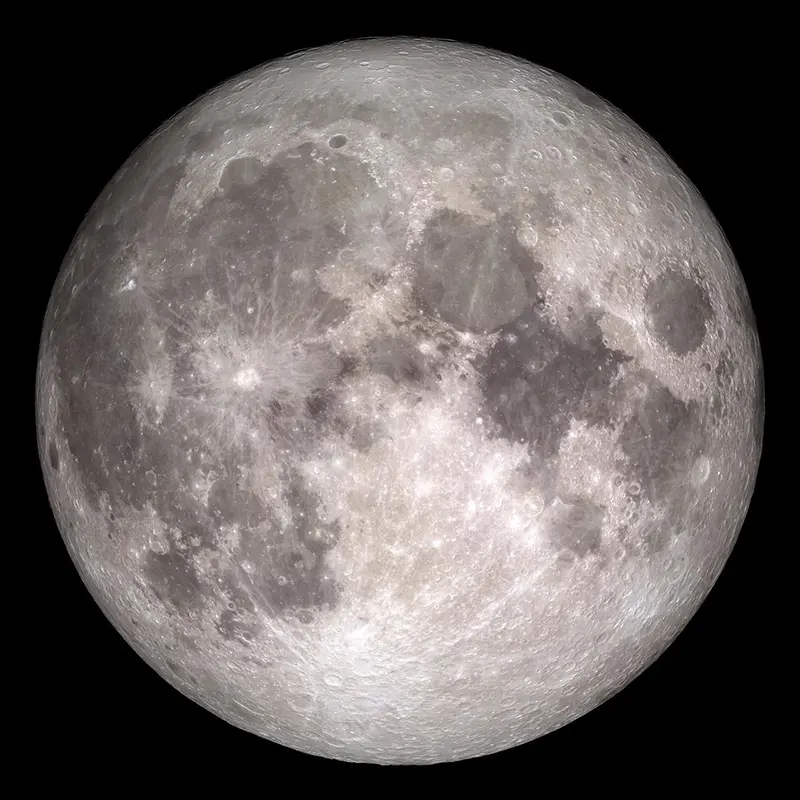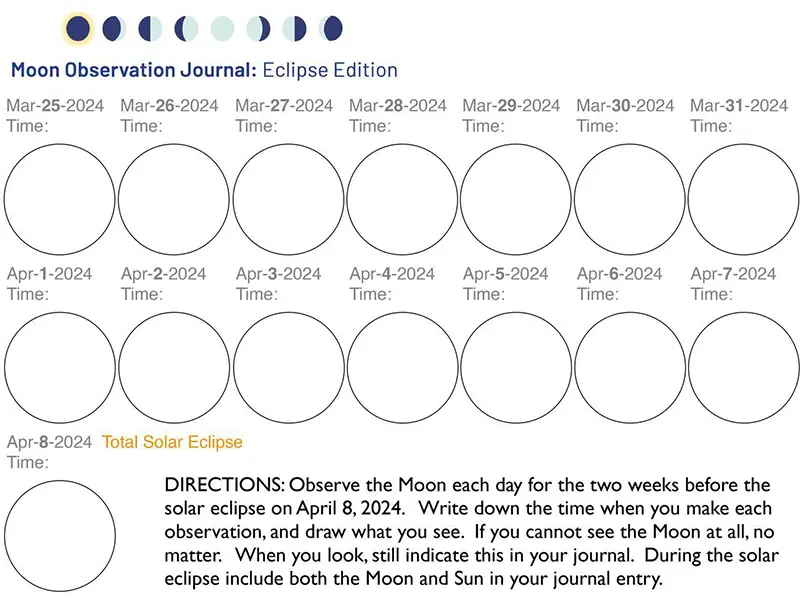NewsletterMarch 25, 2024
T-minus 2 weeks: Keep an eye on the Moon
It is exactly 2 weeks until the total solar eclipse in Geneva! Now is the time to keep an eye on the Moon. Earth’s Moon is just as important to a total solar eclipse as the Sun because the Moon is the object that blocks the Sun’s light.

Earth’s moon is surprisingly large given the size of Earth. It is similar in size to the 4 largest moons around Jupiter that were discovered by Galileo in 1610, but Jupiter has 300 times more mass than Earth. Scientists are pretty sure our Moon formed when a giant rock the size of Mars collided with the Earth early in the formation of the solar system. The debris from the collision exploded into space, but much of it did not escape Earth’s gravitational pull. The debris ultimately coalesced -- through the force of gravity -- into a single large object in orbit. Our Moon.
At the time of formation, the Moon was almost 10 times closer to the Earth than it is now, so it appeared about 10 times bigger in the sky! But the Moon has been drifting away from the Earth since its formation. At this point in our history, the Moon takes 27.3 days to travel 360 degrees around the Earth, but because the Earth is also moving around the Sun, the Moon must travel for another 2 days in orbit before it returns back to the same position relative to the Earth-Sun line. This is the 29.5-day lunar month that gives rise to the periodic phases of the Moon.
A total solar eclipse can only happen during the New Moon phase when the Sun and Moon are together in the sky on the same side of the Earth. During this phase, they rise together in the morning over the lake and set together in the evening. However, today is exactly 14 days before the eclipse, putting the Moon half-way around its orbit on the exact opposite side of the Earth from the Sun.

Observe the Moon and it's phases in the days leading up to the total solar eclipse.
This is the Full Moon phase when the Moon is rising over the lake in the early evening just as the Sun is setting in the west. From now until the eclipse, keep an eye on the Moon in the sky and watch its brightness wane from full to gibbous to quarter to crescent as it gets closer and closer to the Sun. During this progression, it will rise later and later in the evening so that one week from now, it will come up around midnight. Over the following week, it will continue to rise later and later in the early morning hours -- past our bedtimes, and we will start to notice it as we wake up instead. On April 8, it will come up just after sunrise and pass directly in front of the Sun at 3:21 p.m. in the afternoon, creating the total solar eclipse.
Please join us for an eclipse gathering in the afternoon of April 8 where the campus community can come together to view the rare total solar eclipse. Classes are suspended for the afternoon so we can celebrate this unique event with an afternoon of fun and informative activities.
Faculty, staff, alumni and parents must register themselves and any family members who are attending HERE. Boxed lunch and HWS Year of the Sun t-shirts are available for purchase while registering.
HWS students do not need to register. Students will be provided with glasses and T-shirts. Food trucks will be available for HWS students only.
Best Regards,
- Leslie Hebb
Associate Professor of Physics, researcher of the fundamental properties of stars and extrasolar planets, the formation and evolution of planetary systems and the magnetic activity on low mass stars.
